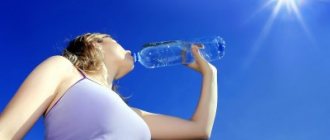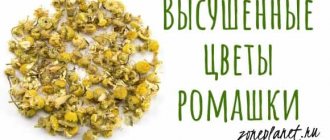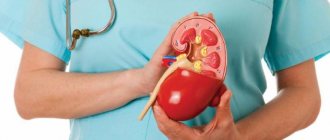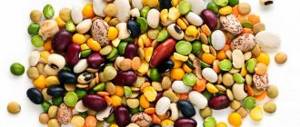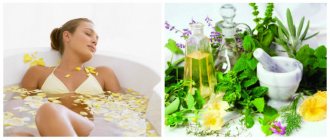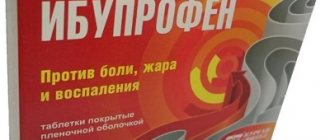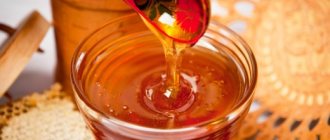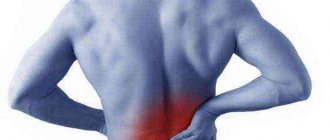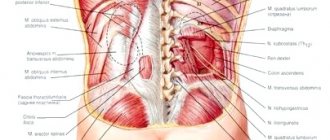Emergency conditions
Attacks of renal colic, which are characterized by acute pain in the side, lumbar region, abdomen and external genital organs, indicate serious disturbances in the functioning of the kidneys. The cause of pain is overflow of the renal pelvis with urine due to blockage of the urinary tract by stones, clots of mucus, pus or blood, due to various diseases or injuries. Help in such acute conditions is aimed primarily at relieving pain and treating the diseases that caused the attack, and a diet for renal colic is one of the effective ways to prevent and alleviate symptoms during treatment.
Necessity of diet
Renal colic occurs more often in men than in women. The pain and spasm during an attack are severe. These symptoms are caused by the movement of stones through the urinary tract. Pain syndrome can only be relieved with medications, but a diet will help alleviate the patient’s general condition and prevent the development of complications.
Dietary nutrition enhances the effectiveness of drug therapy, prevents the appearance of stones and promotes the dissolution of existing ones. It helps to achieve stable remission.
Patients with renal colic are prescribed diet No. 10. After recovery, in the absence of contraindications, you can return to your normal diet.
What is renal colic
Renal colic is manifested by an attack of high intensity pain, localized in the lumbar region or abdomen, which is caused by stretching of the renal capsule or the walls of the ureter. The duration of the attack is usually from one to two hours, the pain can radiate to the perineum and genitals, after the end of the attack small pebbles and traces of blood may be found in the urine. Most often, its cause is complete blockage of the lumen of the ureter by a migrating stone, as a result of which urine cannot penetrate the bladder and stretches the kidney tissue .
The movement of a stone along the ureter can lead to stretching of its walls and complete occlusion of the lumen, which clinically manifests itself as an attack of cramping pain in the lumbar region - renal colic
Kidney stones differ primarily based on their chemical composition. The most common types are:
- oxalates - are salts of oxalic acid, externally they look like black or gray crystals with pointed edges, often spiky in shape;
- phosphates - capable of being formed under conditions of a shift in the acid-base state to the alkaline side from calcium salts of phosphoric acid, they are round or oval-shaped pebbles of white or light gray color;
- urates - are derivatives of uric acid salts; their formation requires an acidic environment; they are smooth, hard crystals of terracotta color;
- struvites - are formed from ammonium phosphate against the background of infectious and inflammatory processes that affect the kidneys; their formation requires an alkaline environment, which is why they are also called infection stones.
Determining the type of kidney stones is necessary for proper treatment of the pathology
Much less common are cystines, xanthines, cholesterol and protein stones. Knowledge of the chemical structure of stones is necessary in order to prescribe the correct diet, since the acidity and alkalinity of urine directly depend on the quality of the water consumed and a number of foods. The purpose of the diet is to create conditions that prevent further deposition of salts and the growth of stones, as well as to prevent the formation of new stones .
According to currently available information on the incidence of this problem, men are more predisposed to the formation of uroliths from calcium salts and uric acid, while struvite formations are more often diagnosed in women.
General rules
Table No. 10 involves reducing the daily caloric content of food consumed, but nevertheless, the diet provides the patient with the necessary amount of nutrients and energy reserves. You shouldn’t consume a lot of proteins and fats, but you shouldn’t exclude them from your diet either.
The basis of the diet should be complex carbohydrates, healthy plant foods. Preference should be given to vegetables and fruits that have a diuretic effect, for example, watermelon.
Salt is excluded from the diet. It can be replaced with vegetable, fruit or sour cream sauces. To make food tastier, you should add lemon juice or herbs to your food.
Features of nutrition for renal colic:
- eat small portions 4-6 times a day;
- follow the regime, the break between meals is no more than 4 hours;
- do not eat less than 3 hours before bedtime;
- cook, steam or stew food.
The drinking regime must be expanded. How much fluid to drink? At least 2-3 liters per day.
Expansion of the drinking regime is possible only in case of urolithiasis. If renal colic occurs against the background of another disease, you need to limit fluid intake to 1 liter per day.
Traditional methods of treatment
Numerous traditional healers offer us help with renal colic. Although they, first of all, advise consulting a doctor. But while waiting, you can apply a cabbage leaf to your lower back or drink an infusion of birch buds.
Horsetail has proven itself well, and knotweed also helps quite well with this ailment. For colic, prepare a decoction from a mixture of centaury and sage; it is even better to add chamomile to it. You can drink this drug for a long time, up to two months. But you can not only drink horsetail, but also add it to your bath.
Compresses made from hot potatoes or oat broth are also suitable. In general, there are many recipes. If you add a diet to all this, success is guaranteed. But on one condition: please call a doctor!
Well, to be very serious, it is unlikely that traditional methods will withstand competition with modern medicine in the treatment of the acute phase of the disease. But now you have been relieved of the pain attack, examined, given nutritional recommendations, and prescribed medications. Now we need to work hard to cleanse our kidneys of unnecessary “junk”, to dissolve and expel everything that should not be there. It is at this stage that the experience of traditional medicine is simply irreplaceable.
It is the collections of herbs and medicinal plants that have been polished over centuries that will help you completely say goodbye to the disease, and at the same time restore the impaired metabolism. The best thing is to find an experienced herbalist and, with patience, carry out the course of treatment to the end, as expected.
And after that, be sure to undergo a re-examination and compare the results. What can you do? In this world, nothing comes to us without difficulty, but health is worth it!
Authorized Products
What can you eat? The list of allowed products looks like this:
- cereals;
- pasta;
- vegetables and fruits, especially cucumbers, zucchini, melons, watermelons, apples, beets, cabbage, potatoes and carrots;
- lean meats and fish;
- seafood;
- eggs (eat no more than 2-3 pieces per day);
- butter (in small quantities) and vegetable oils (olive, sunflower, flaxseed);
- low-fat dairy products, unsalted cheeses.
You can eat soups with a second broth, dairy first courses.
As for the liquid consumed, the patient can drink boiled or purified water, juices, compotes, fruit drinks (cranberry and lingonberry are especially useful), jelly, herbal teas, weak black or green tea, rosehip decoction. The use of mineral water should be agreed with your doctor.
Recommended Recipes
It is generally accepted that dietary dishes do not have high taste qualities. But it all depends on how you cook them. Show a little imagination, patience and effort - everything will turn out delicious. Here are some simple but delicious recipes.
Lenten borscht with bell pepper
To prepare it you will need:
- onion – 1 head;
- potatoes - 3 pcs;
- beets – 1-2 pcs;
- carrots – 1-2 pcs;
- cabbage – 300 gr;
- greenery;
- bell pepper, sweet – 1 piece;
- garlic, bay leaf;
- tomato paste – 2 tbsp;
- salt pepper;
- sour cream - upon serving.
Peel the potatoes, cut into small pieces, set to boil, after 10 minutes add shredded cabbage. While all this is cooking, finely chop the beets, carrots, onions, and peppers. Lightly fry in a small amount of vegetable oil. Then add boiled water, add tomato paste and simmer.
You can add a few drops of lemon juice to color the beets. Simmer until the beets are ready. Add to potatoes and cabbage. Salt, preferably a little.
Just before the end of cooking, finely chop the garlic and herbs and add to the borscht. Serve with sour cream .
Steamed fish with vegetables
Required:
- lean fish fillet – 500 g;
- carrots – 2 pcs;
- red pepper, bell pepper – 2 pcs;
- onions – 2 pcs;
- garlic – 2 cloves;
- lemon – 1/2 pcs;
- salt, permitted spices.
Cut the fish into portions and marinate in lemon juice. Chop the carrots, chop the garlic, cut the onion and pepper into rings. Place foil on the tier of the steamer. Place vegetables on it. Place the fish on top, salt and pepper, and wrap in foil.
Cooking time depends on the size of the fish and the power of the steamer, but, as a rule, it does not exceed 60 minutes .
Prohibited and Restricted Products
Patients with renal colic should not eat the following foods:
- lard, fatty meats, fish, offal, sausages, smoked meats;
- pickles, marinades, canned food, pates;
- hot spices, mustard, ketchup;
- mushrooms, legumes, spinach, sorrel, radishes, onions and garlic;
- rich broths;
- fresh bread and baked goods;
- high fat dairy products;
- strong coffee, tea and cocoa;
- carbonated drinks;
- chocolate, confectionery products with fatty creams;
- alcohol.
You need to eat only natural food. Eliminate foods with dyes, preservatives and other harmful food additives from your diet.
Treatment in hospital and at home
There are a number of indications for hospitalization and treatment in a hospital:
- renal colic on both sides;
- a seizure in a child or pregnant woman;
- having only one kidney;
- lack of effect from home therapy;
- elderly age;
- presence of complications;
- development of colic against the background of pyelonephritis, tumors;
- the appearance of frequent, severe vomiting;
- a sharp increase in body temperature;
- lack of urination.
To relieve an attack, medications are administered in injections, using the above-mentioned antispasmodics, non-narcotic analgesics (a mixture of Novocaine with glucose, Pipolfen, Halidor, Atropine, Diphenhydramine, Diclofenac, Ketonal, Promedol, Platyfillin, Maxigan). You can use non-steroidal anti-inflammatory drugs in tablets and suppositories.
The use of painkillers and medications for smooth muscle spasms is continued until the stone passes and the patient’s condition improves. Antibiotics are prescribed if the cause of colic is an inflammatory process, or it occurs against the background of pyelonephritis. If there is no effect of medications and acute urinary retention, ureteral catheterization is performed. Often you have to do emergency surgery (endoscopic or abdominal methods) to remove the stone.
As the attack subsides and the patient’s health returns to normal, the patient is discharged. A further course of therapy must be carried out at home. It may include the following drugs:
- Means for optimizing blood circulation in the renal vessels - Pentoxifylline, Trental.
- Uroantiseptics for relieving inflammation - Furomag, Nitroxoline.
- Medicines to improve the functioning of the entire urinary system and dissolve stones - Olimetin, Urocholum, Litovit, Uro-Vaxom, Canephron, Cyston.
Dietary recommendations for different types of stones
The diet is selected by the doctor individually for each patient, taking into account the composition of the stones, as well as the characteristics of the course of urolithiasis and the presence of concomitant kidney diseases.
Oxalate
This is the most common type of stone. To prevent their formation, you need to reduce the amount of protein (up to 100 g per day) and foods high in vitamin C. Limit intake of rosehip decoction, consumption of apples, grapes, strawberries and other fruits containing ascorbic acid.
To remove oxalates, you can eat cucumbers, watermelons and melons. Vitamin complexes containing magnesium, retinol and B vitamins are useful.
Phosphate
For phosphate stones, foods high in vitamin C, on the contrary, are beneficial. The basis of the diet should be lean meats and poultry, vegetable oil, cereals, fruits and sour vegetables. Rosehip decoction, honey, pumpkin, watermelon are useful.
It is worth excluding milk, cottage cheese, fish, nuts and potatoes from the menu.
Urate
It is necessary to limit protein intake to 100 g per day. Vegetables, sweet fruits, low-fat fish, meat and poultry, porridge (except buckwheat), dairy and fermented milk products are allowed.
You can't eat cheese or sour berries.
Examples of recipes for dishes made from healthy ingredients
The menu used such dishes from healthy products as lean borscht, soufflé made from meat and cottage cheese. We invite you to familiarize yourself with their recipe:
- Lenten borscht : Potatoes, carrots – peeled and chopped. Cabbage and tomatoes are chopped. All ingredients are thrown into the prepared hot broth and boiled for 10-20 minutes. Before serving, add grated cheese and herbs to the soup.
- Meat soufflé : Boiled beef (60 g) is beaten in a blender. Next, prepare white sauce from 2 tbsp. l. milk and 1 tbsp. l. flour. Sauce, egg yolk and beaten white are added to the prepared meat. The whole mass is mixed and placed in a special container and steamed to condition.
- Curd soufflé : 100 g of low-fat cottage cheese is rubbed through a sieve. 10 g of melted butter and semolina, 20 g of sugar and 5 g of starch are added to it. The whole mass is thoroughly mixed and poured into a mold, which is placed in a water bath. Cooking time: 40 minutes.
Based on the presented menu, recipes and healthy products, you can experiment and diversify your diet.
Sample menu for the week
Food should be varied. Sample menu:
- Monday: omelet, bread with cheese, dried fruit compote, cereal soup with second broth, potato balls, cottage cheese with raisins, tea, fresh vegetable salad, boiled chicken breast, kefir.
- Tuesday: milk buckwheat porridge, bread with tea, rice soup with meatballs, potato casserole, fresh cucumber salad, jelly, 300 g of watermelon, seafood salad, apple juice.
- Wednesday: vermicelli, boiled egg, kefir, buckwheat soup, pilaf, tea, baked pumpkin, lingonberry juice, boiled potatoes with veal, kefir.
- Thursday: cottage cheese casserole, yogurt, pumpkin puree soup, vegetable stew, grape juice, jam with bread, tea, mashed potatoes, boiled vegetables, milk.
- Friday: millet porridge, pancakes, tea, noodle soup, vegetable stew, fruit drink, cheesecakes with sour cream, juice, pilaf, steamed fish, jelly.
- Saturday: pancakes with cottage cheese, kefir, potato soup, vinaigrette, tea, watermelon or melon, cauliflower with beef, fermented milk drink.
- Sunday: corn porridge with milk, rosehip broth, buckwheat soup, fish cutlets, stewed vegetables, herbal tea, berry jelly, baked potatoes, fresh vegetable salad, pear juice.
Are fasting days necessary and how to arrange them?
For renal colic, fasting days are allowed, but not more than once a week. Therapeutic fasting is carried out under the strict supervision of a doctor.
The purpose of fasting days is to reduce the excretion of harmful substances by diseased kidneys and reduce the symptoms of intoxication. You can only eat one food during the day. The portion is selected so that the feeling of hunger is maintained.
The following products are suitable for the diet:
- watermelon or other fruits - 300 g 5 times a day;
- vegetable salad – 300 g 5 times a day;
- oatmeal without salt.
The drinking regime is maintained during the fasting period.
Do not neglect the diet prescribed by the doctor. If you do not follow the diet, there is a high probability of a recurrent attack.
Author: Oksana Belokur, doctor, especially for Nefrologiya.pro
Examinations to clarify the diagnosis
Symptoms of colic may resemble a “hot stomach.” This concept includes a whole group of diseases. In addition to appendicitis, hepatic colic looks similar; it is also necessary to exclude acute cholecystitis and pancreatitis.
An error can also occur in the presence of peptic ulcers of the duodenum or stomach. Some vascular diseases, intestinal obstruction, not to mention women's ailments have almost similar symptoms. Symptoms of renal colic in women have their own specifics, so a special section is devoted to this topic.
In addition to the “acute abdomen,” a similar picture is given by herniated discs, radiculitis, herpes zoster, or even ordinary intercostal neuralgia. Almost complete coincidence of symptoms occurs with intestinal obstruction.
Many of these diseases require emergency action. So the task facing a doctor seeing a patient for the first time is not at all an easy one. This is why you should never resist an offer to go to the hospital and have a comprehensive examination done there. For renal colic, this is an absolute, one hundred percent indication.
In this case, an incorrect diagnosis may well cost a life. For example, the ureter could be completely blocked by a stone. This cannot be determined by external examination, but it may well lead to necrosis of the kidney and its acute failure. You may need to insert a catheter or have surgery and drainage of the organ. It is unlikely that you will be able to do all this without leaving home.
In a hospital setting, a doctor can prescribe a variety of tests as needed, as well as provide proper care for renal colic. However, first of all, they usually do general tests, specifying the biochemistry of the blood and, of course, an ultrasound of the excretory system, and possibly an x-ray.

